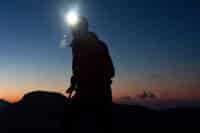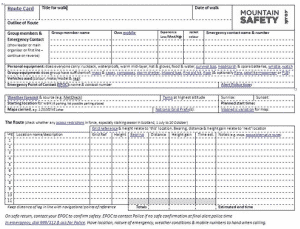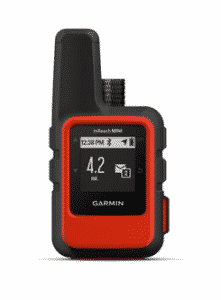So you read our last blog post on what to wear if it’s looking a bit chilly outside (see Brrrrr! What shall I wear today), and now you’re thinking ‘What else do I need to think about for my forthcoming winter adventure?’ This blog post will equip you with some top tips on how to plan for a winter adventure, whether on foot, bike or by boat. You will of course, need to think how to adapt these guidelines to your specific adventure.
 If you’ve not tackled a winter expedition to date, but are accustomed to multi-day adventures during the warmer months, you already have a head start. If you’re new to expeditions, it is recommended that you go with someone experienced. If going alone (or with equally inexperienced friends), perhaps wait until the Spring/ Summer to try it out for the first time.
If you’ve not tackled a winter expedition to date, but are accustomed to multi-day adventures during the warmer months, you already have a head start. If you’re new to expeditions, it is recommended that you go with someone experienced. If going alone (or with equally inexperienced friends), perhaps wait until the Spring/ Summer to try it out for the first time.
Winter expeds are not to be taken lightly, given the additional risks involved. However, if done properly the rewards can be awesome. Some of the best days are out on clear, winter’s days, with snowy landscapes stretching into the distance, and the winter sun creating long shadows. Just magical.
So where should you start?
Risks associated with winter expeditions in the UK
First off, it is probably worth considering what you are planning for, given the additional risks associated with heading outdoors in the colder months.
Temperatures
 It can be (and usually is) much colder. Night time temperatures have already sunk to -5.4C in Scotland this week (October 2019) and we’re not even into winter yet. So, expected (an unexpected) temperatures are a key consideration in your planning. If you consider that Ben Nevis (the UK’s highest mountain) has an average annual temperature of just -0.3C, that gives you a feeling for how cold it can get in the depths of winter up a big hill!
It can be (and usually is) much colder. Night time temperatures have already sunk to -5.4C in Scotland this week (October 2019) and we’re not even into winter yet. So, expected (an unexpected) temperatures are a key consideration in your planning. If you consider that Ben Nevis (the UK’s highest mountain) has an average annual temperature of just -0.3C, that gives you a feeling for how cold it can get in the depths of winter up a big hill!
During the day you may still be in a t-shirt or lightweight top, but as the sun drops it will get much, much colder. In the depths of a Scottish Winter, the conditions can be extreme, aided by strong to gale force winds on occasion. When wind-chill comes into play, the risk of injury (from frost-bite to much worse) really should focus your mind. If you get cold, it is much harder to warm up again.
Wind-chill
As mentioned, the effect of wind on the temperature can be dramatic. Exposed extremeties (fingers, ears, noses) get cold much quick and you have to be aware of this or risk serious injury. Top tip: dress appropriately!
Find out more about wind chill and how to calculate the effect that wind has on temperature – Mountain Safety
Weather
 Winter days can be awesome, but every once in a while they are not! Things can change unexpectedly, so you need to prepare for the worst. A typical winter day out in the Scottish hills can be described as ‘4 seasons in one day’! The sun might be blazing one minute, then the hailstones start hitting your face like sharp needles, followed by a snow-fall that starts hiding the trail you are following. Fun, eh?!! It can all be part of the fun, but not if you are unprepared.
Winter days can be awesome, but every once in a while they are not! Things can change unexpectedly, so you need to prepare for the worst. A typical winter day out in the Scottish hills can be described as ‘4 seasons in one day’! The sun might be blazing one minute, then the hailstones start hitting your face like sharp needles, followed by a snow-fall that starts hiding the trail you are following. Fun, eh?!! It can all be part of the fun, but not if you are unprepared.
Top-tip: check the weather forecast a number of times in the lead up to an expedition. Particularly important in snowy conditions, as the avalanche risk might be high.
A great starting point for weather forecasts in the UK is the Mountain Weather Information Service
 Daylight
Daylight

walker using head torch at night
In mid-winter, in the north of Scotland you might find it’s pretty dark until 8:00-8:30AM some days and then gets dark again not long after 3:00PM. That’s not an awful lot of daylight to make use of. You therefore have to plan accordingly, and not get caught out. Think carefully about your route and where you want to finish for the day, thinking in particular about the places you really don’t want to be (e.g. top of an exposed hill).
Winter navigation in the dark or snow-covered hills is a very different and more challenging experience than in good daylight conditions.
Time
 Everything takes longer in winter. You carry more clothing, equipment and food, so you will tend not to progress as quickly. Stopping for a break is more likely to involve hot drinks and food, so more time is required to prepare. If you need to go for a pee, it takes longer to work your way through layers of clothing. Then, if you’re walking on snow, or up an icy ascent, progress really slows down to a snail’s pace.
Everything takes longer in winter. You carry more clothing, equipment and food, so you will tend not to progress as quickly. Stopping for a break is more likely to involve hot drinks and food, so more time is required to prepare. If you need to go for a pee, it takes longer to work your way through layers of clothing. Then, if you’re walking on snow, or up an icy ascent, progress really slows down to a snail’s pace.
There are other examples too, but that gives you an idea of what you need to consider when planning your route, and how long you can expect things to take.
Hopefully, you’ve not been put off by all these potential risks, but as mentioned earlier, some of the best days out can be in the winter time.
So, what next?
Clothing
 This was covered in our last blog (see Brrrrr! What shall I wear today), so rather than go over old-ground again, it’s perhaps just a case of re-iterating that the layering principle still applies: wear layers that can be removed/ added as and when necessary. If heading out in winter you need to take extra clothing including a warm hat and waterproof gloves, maybe a balaclava, or even some long-johns to wear under your trousers. You need something dry and warm to sleep in at night as well.
This was covered in our last blog (see Brrrrr! What shall I wear today), so rather than go over old-ground again, it’s perhaps just a case of re-iterating that the layering principle still applies: wear layers that can be removed/ added as and when necessary. If heading out in winter you need to take extra clothing including a warm hat and waterproof gloves, maybe a balaclava, or even some long-johns to wear under your trousers. You need something dry and warm to sleep in at night as well.
Equipment required
Like clothing, you need more equipment in the colder months of the year. First of all, the likelihood is that you will need a bigger rucksack to fit it all in, perhaps a 60 litre pack. You shouldn’t need bigger than this unless you are heading on a monster expedition somewhere.
Walking poles are useful all year-round, but if you are carrying a heavy pack they also help your posture, as well as stability on slippy ground.
 Crampons (the spiky things you strap on to walking boots) may be required if you are heading out in snowy or icy conditions. You need to take them even if ice is only a potential hazard, as it’s not much fun getting stuck on an icy slope in what might otherwise feel like a pair of skates on a hillside! However, before you go strapping on crampons, it really does help to get a bit of practice, as there is a bit of a knack to it. There are plenty of winter hill skills courses around (for example, at Glenmore Lodge, Aviemore), to teach the basics of crampon and ice axe use, amongst other important skills.
Crampons (the spiky things you strap on to walking boots) may be required if you are heading out in snowy or icy conditions. You need to take them even if ice is only a potential hazard, as it’s not much fun getting stuck on an icy slope in what might otherwise feel like a pair of skates on a hillside! However, before you go strapping on crampons, it really does help to get a bit of practice, as there is a bit of a knack to it. There are plenty of winter hill skills courses around (for example, at Glenmore Lodge, Aviemore), to teach the basics of crampon and ice axe use, amongst other important skills.
Top tip: Make sure that if you buy or hire crampons, that they are suitable for your walking boots (as there are different types of crampon).
Navigation is a prime concern, so in addition to the map and compass that you will of course, know how to use properly, satellite navigation devices can be a great help too. Don’t rely on them though! Batteries can go flat or the device might just stop working altogether. Be warned!
 Snow goggles and sunglasses – You might not think about these, but goggles are so important in hail storms or blizzards, keeping icy precipitation out of your eyes as the wind fires it at your face! On the other hand, winter sun reflecting off the snow can be blinding, and a decent pair of sunglasses can be a life-saver (helps protect your eyes from the damaging UV light too).
Snow goggles and sunglasses – You might not think about these, but goggles are so important in hail storms or blizzards, keeping icy precipitation out of your eyes as the wind fires it at your face! On the other hand, winter sun reflecting off the snow can be blinding, and a decent pair of sunglasses can be a life-saver (helps protect your eyes from the damaging UV light too).
You may also need sunblock if it’s really snowy and sunny, as the UV light reflects off the snow. Sun burn in the winter is not unheard off, even in Scotland!
Finally, if you are planning to camp out in winter, the chances are you will be in your tent early. So, a head torch and spare batteries are essential. You might want to take an MP3 player or a book to read.
Given the ever-increasing number of electronic gadgets we tend to carry nowadays, you should take a portable battery pack with you, to charge the aforementioned gadgets. Bear in mind that in colder conditions, batteries don’t perform as well and go flat a lot quicker than you might otherwise be used to.
If you have a tent, you can use it to shelter if you get stuck somewhere. Otherwise you should carry a bivvy bag that you can use as as protection from the elements if you are stuck in a blizzard somewhere, or in an emergency.
Sleeping
 It’s a great feeling crawling into your sleeping bag at the end of a tiring day on the hills. There’s a good chance you could be doing this around 4:00pm in mid-winter! You will need a warm sleeping bag (down or synthetic is fine), but bear mind mind you will need one rated down to the temperatures you are going to experience. A sleeping bag liner is a good idea to add an additional layer without taking up much room in your rucksack. You can also wear some of your clothes in the bag as well, if that helps. It helps if you jump around a bit before climbing in, to generate some body heat to take in the bag with you. Star jumps under the winter stars?
It’s a great feeling crawling into your sleeping bag at the end of a tiring day on the hills. There’s a good chance you could be doing this around 4:00pm in mid-winter! You will need a warm sleeping bag (down or synthetic is fine), but bear mind mind you will need one rated down to the temperatures you are going to experience. A sleeping bag liner is a good idea to add an additional layer without taking up much room in your rucksack. You can also wear some of your clothes in the bag as well, if that helps. It helps if you jump around a bit before climbing in, to generate some body heat to take in the bag with you. Star jumps under the winter stars?
Importantly, you should have a suitable tent for the conditions. Obviously, it needs to fit in your rucksack (or shared between rucksacks). It needs to be easy to put up so you are not faffing around in the cold.
Top tip: don’t go piling snow up around the base of the tent to keep the draughts out – you still need ventilation in winter. Otherwise, all that hot air you breathe out will turn to ice in the tent as it sticks to the material. Then as the temperature rises, it makes everything wet including your sleeping bag.
Top tip 2: drink more earlier in the day to help prevent the inevitable middle of the night pee. If it’s really cold you might want to learn how to pee in a bottle to save you leaving the tent. Ladies, it is possible for you too! Check this out
Have a good think about where you pitch your tent as well. Consider how exposed it is to the wind, drifting snow or avalanches.
Food
 Always important, but perhaps more so in winter. You need additional calories in winter because your body is working harder. Hot food and drinks also do wonders for your mood if you are cold and wet.
Always important, but perhaps more so in winter. You need additional calories in winter because your body is working harder. Hot food and drinks also do wonders for your mood if you are cold and wet.
Given your rucksack will already be heavy, dried, high-energy foods that you can rehydrate are best. You can buy all sorts of dehydrated foods in outdoor shops and online these days, but things like pot noodles and packet soups are great as well. Remember some treats, coffee, tea bags and take spare food in case you get stuck in a snow-storm. There is usually plenty of water around in the winter months, whether in liquid or ice forms.
Top-tip: take food that is easy to prepare so that you don’t risk getting too chilly while waiting for it. Better still, take food that you can prepare with your gloves on! Take plenty of fuel so you don’t end up eating un-hydrated food!
Remember that although you might not feel like drinking as much, you still get dehydrated in winter. It is really important to keep hydrated even if that means melting snow to fill your water bottles. Don’t skimp on the drinks or it could adversely affect your ability to funtion properly.
Tell someone where you are going
 Before you head off, let someone know where you are going and when you expect to be back. Leave a note of the route plan, rough timings, and potential escape routes, where you’ll park the car (incl. your registration number), and who you’re with. You need to leave this with someone you can rely on to raise the alarm if you haven’t checked in after a couple of hours of your planned return time.
Before you head off, let someone know where you are going and when you expect to be back. Leave a note of the route plan, rough timings, and potential escape routes, where you’ll park the car (incl. your registration number), and who you’re with. You need to leave this with someone you can rely on to raise the alarm if you haven’t checked in after a couple of hours of your planned return time.
You might want to consider leaving a detailed route card with someone. Click on the route card image to find out more.
 Emergencies
Emergencies
In an emergency situation, and you need to get help quickly, there is a very good chance that the mobile phone you carry won’t have any network signal. That’s assuming it hasn’t already run out of battery power because you forgot the charger. So what next? Send someone for help? Wait for help to arrive or use a satellite communicator to summon help?
The situation that arises will be different for everyone so you will need to plan for it and make that call yourself. However, a popular option these days is to take a safety device like a Garmin In-Reach as a back-up plan. At its most basic, you can press the SOS button and a rescue team will be summoned. Some allow you to send texts and post on Facebook as well! This is a very important consideration to factor into your plan as well.
The Rewards of winter adventures
It might all sound like a bit of hard work and life-threatening at times, but I can assure you, the rewards of winter adventures are numerous. You just need to ensure you go with someone who knows what they are doing, or go with some existing experience and thorough planning.
What can you gain from an experience like this?
- A new experience – even if you are returning to somewhere you’ve been already, the experience will be different.
- A new challenge – it can be very different to summer outings, using different skills, more determination and perhaps requiring a greater level of fitness.
- Opportunities for fun – bum-sliding on the snow, seeing wildlife in its winter colours (e.g. ptarmigan, mountain hares, snow buntings)
- It makes you feel awesome – rosie red cheeks and a tired body at the finish line can be rewarded with a well-deserved pint and a bar meal in front of a big fire. You will have a great sense of achievement, have done something that most of your friends won’t have done and whetted your appetite for another adventure. There’s also the fresh-air and exercise, and the positive impact all this has on your physical and mental wellbeing.
Need we say any more?
If you have found this useful do let us know so we can do more blogs like this. Share it with fellow adventurers and start planning your next expedition.


 Emergencies
Emergencies